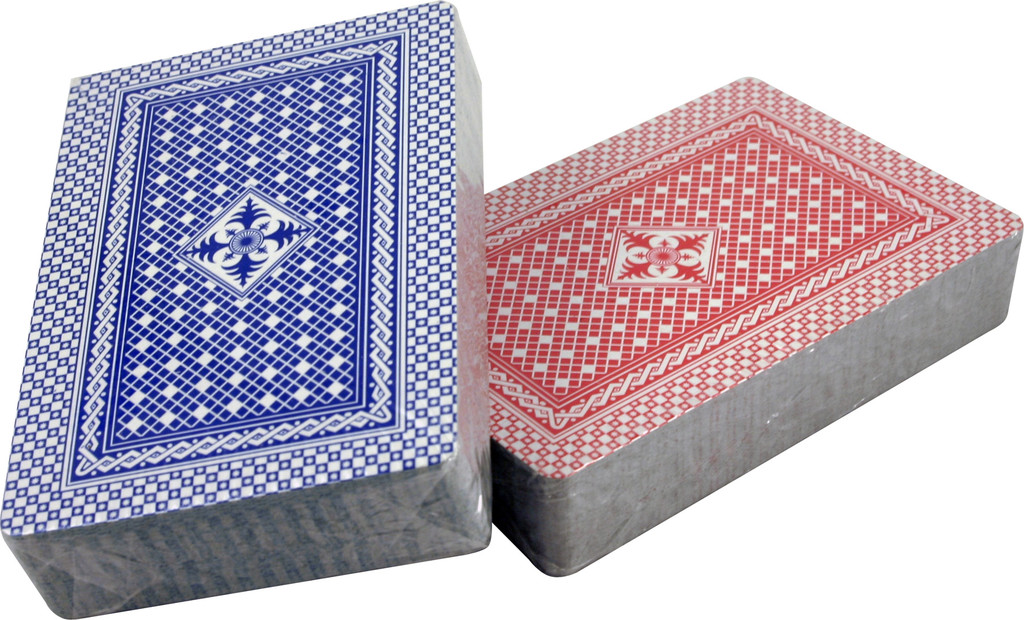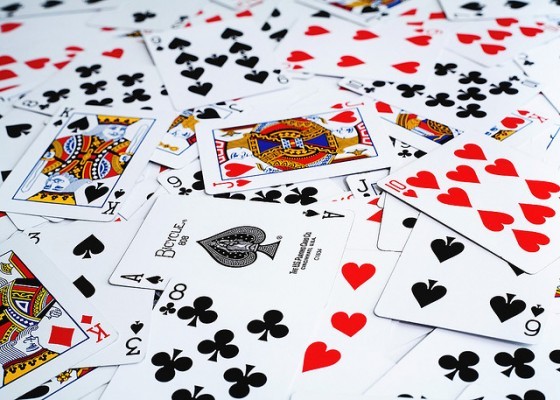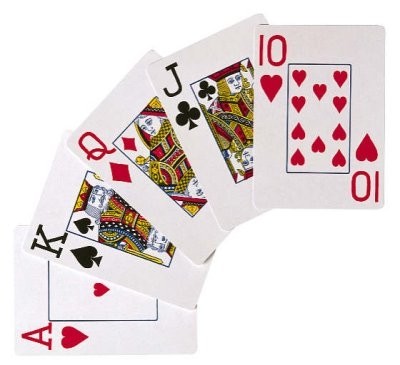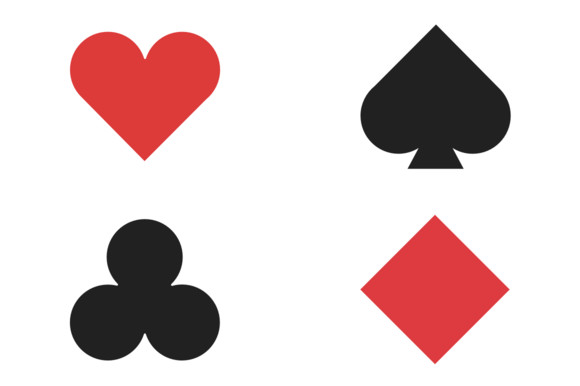Instructions of Vida (screw) card game
Every country has some specific games that you can feel much more ''cool and local '' when you learn how to play them. The easiest kind of games are the games that are played with cards, because some rules are being taken from more international games. One of these games played in Greece is called ''Vida '' which in English is translated as a screw.
Vida (Screw) is a game played with a deck of cards and is for four players. It is a famous game especially in northern Greece, where i come from. It is a really nice game and is similar to Pilotta. Vida includes elements of Prefa and Bridge and is based on the rules of Belote. However, the basic difference with the bridge is, that each card has a value and gives points to the couple who wins the trick or tricks that contain it.
Important rules that you should be aware of
Vida can be played by four people divided into two teams, who sit alternately and use the 32 high cards of the deck. (from number 7 until Ace). The cards are all dealt together (usually with the combination 3-2-3 and not one by one and every player gets eight cards. From the moment that the cards have been dealt, it starts a process which is called market, where it will be decided which color (spades, swords, hearts or diamonds), will be the trump.
Now let's see now how the game is played!
The player who sits to the right of the dealer, is the first who plays a card at the middle of the table. The other three players should follow, in a clockwise movement, the first one by playing the same color card over his. The player who played the strongest card is the one who wins the trick. That means that he takes the four cards and lay them face up in front of him, as the earnings of his team. Also, he chooses from the remaining cards of his hand the next one that will lead the trick.
If a player does not have the same color card with the one that has been played, he is obligated to break (cut), and play the trump, which is the strongest card, and win the trick.
If the player is required to play a trump, in a trick that is already has been played a trump card, the player is obliged raise and play a trump that is stronger than all the previous that have been played in this trick. This rule applies too in the case that the first card was a trump. If you do not have a stronger trump, you can use whatever trump you may want, from those that you already have.
If a player has neither the color that the trick started, nor a trump, he may play any other card but he will lose the ability to get the trick.

Hierarchy of cards
In the process of buying (market), the color of the trump is decided. Any trump is higher than any other color card. In the trumps the hierarchy and the points that correspond to the cards, go like this:
J (20 points, top card in the game)
9 (14 points)
A (11 points)
10 (10 points)
K (4 points)
Q (3 points)
8 (0 points)
7 (0 points)
In the other three colors:
A (11 points)
10 (10 points)
K (4 points)
Q (3 points)
J (2 points)
9 (0 points)
8 (0 points)
7 (0 points)
Look how A, K, Q, 8, 7 have the same value in trumps and in the other colors. But any trump is stronger card than any other card of other colors. Cards 9, 8, 7 outside trump are also called Lima.
Signals
During the gameplay (as in the market), they have been developed some ways of playing that give useful information to your partner, that are called signals.
The most prominent signal is the Ace that your partner has played, instead of load (=to play a large value card, because the trick will be taken from your team), play Lima (a card with 0 points). This way your teammate understands that you may have the 10 at the exact same color, so he will probably play again the same color for you to win the trick.
Another useful signal is “xeskartarisma” (throwing away). It usually happens when the buyer (your teammate)draws a trump from the deck. At the point where you cannot follow the color of trumps because they are over, you throw away from a color that you don’t have cover ace or that you just don’t want your teammate to play there. By this move, your teammate gets some information about what color he should continue with. Xeskartarisma or throwing away can also be – but more rarely- and in another color except from the trumps where again the first throwing away has the same meaning which is ‘’ I don’t have the ace in this color ‘’ or generally ‘’ I don’t want you to play this color’’.
How the points are being counted
In every game the total points are 162 (152 points from cards and 10 bonus points for the team that will get “patini”, 8thand 9thtricks. At those ponts “air” is added, namely some extra points from card combinations after the deal, so the total number of points is 162 plus air.

Air
“Air” is the combination of cards that the player can create by the 8 cards that he has been given. Specifically “thrids”, “fourths” and “fifths” (three, four or five cards of the same color in sequence. (A, K, Q, J, 10, 9, 8, 7), four of a kind (JJJJ, 9999, AAAA, 10 10 10 10, KKKK, QQQQ) and Belote (King and Queen) to trump. “Thirds” give 20 points, “fourths” give 50 points and “fifths” give 100 points. The points that you get from four of a kind depends on the cards that the combination consists of. For example, four of a kind with J is worth 200 points, four of a kind with 9 is worth 150 points, four of a kind with A, 10, K, or Q are worth 100 points. Finally four of a kind with 7 or 8 does not give points.
In each distribution (deal), immediately after the purchase (market), the two teams compare their “air” verbally, without showing it (except belote that is being declared during the game). The team of the player who declared the strongest combination, shows it to the opponents and the game starts with the points that correspond to the team’s “air”.
Air Points
Four J 200
Four 9 150
Four A 100
Four K 100
Four Q 100
Four 10 100
A “fifth” 100
A “fourth” 50
A “third” 20
If the players of the two teams have “air”, the only “air” that counts is the one of the player with the strongest combination.
In case that the strongest combination of two opponents is in the same category (i. e. they both have a “fourth”), then the winning combination is the one with the higher cards. For example the combination that wins is the one with the higher cards (i. e. J, 10, 9, 8 of hearts is a “fourth” at J and is weaker than A, K, Q, J of diamonds which is a “fourth” at ace).
In case “third”, “fourth” and “fifth”, end up to the same card, the one that counts is the one with the trumps. If none of them have trumps, then none of them counts.
The rare case of “sixth” or “seventh” (6 or seven cards in row), is stronger than “fifth” or “sixth”, but still counts 100 points.

Example 1
The two players of team A have two “thirds” (9, 8, 7 of spades and K, Q, J of swords), that both are smaller of the “third”, that team B has (A, K, Q of hearts). The only “third” that counts is the one of team B, and that means that team B will start with 20 points.
Example 2
The two players of team A have a “third” (9, 8, 7 of spades) and a “fourth” (K, Q, J, 10 of swords), and team B has a “third” (A, K, Q of hearts). The “air” of team A counts and that means that team A will start with a bonus 50 +20 =70 points.
“Belote”
“Belote” is a kind of “air”. When a player has K and Q trumps, then the moment he plays the first of the two cards and during the gameplay, he shouts “Belote” and his team gets 20 points. These points cannot be affected by the “air” that the opposing team may have. The can only be affected in case there is a vida(screw), because the winner gets all the points.
The combination Belote (K + Q to trump), should not be confused with the card game Belote which is a predecessor of vida (screw).

Counting points
At the end of each round, every team counts the points of its cards plus 10 points for “patini”. The sum should be 162. The points of each team rounded when leading 1-5 in the nearest ten while when leading 7-9 in the upper ten.
Important note
First we decide if the points that the buyers have reached are enough for us to buy and after that the round starts.
In case the number of the points ends up at six (i. e. team A has 146 points and team B has 16 points), then the rounding will be on the team that has the tricks of the J in trumps (that is the strongest card in the game). The sum is 160 points (because of the rounding). At these points “air” is added (0-550 points) and belote (20 points)
Buying (market)
Market is the first phase of the game after the dealing. Every player has the right to :
- To open the market, that means to predict the points that his team will get if the trumps will become the cards of a specific color. You can do that by predicting the less possibly points that you will get also the color of the trumps that you have to suggest. The statement should be multiple of ten with starting at least with 80 points.
- To raise the market by stating the biggest offer (in points) from the previous statement. He should state the points (multiple of ten) and color.
- To fold
- To put a vida (screw)
The team that wins the market has two liabilities :
- Has to gain at least the points of the last statement, with trumps of the color of the last statement (by adding the “air” or possible belote).
- To gain more points from the opponent team
If the team does not manage to get the necessary points or at least more points than the opponent team, then the one team will not get any points while the other team will get all the points.
The market is finished after three folds.
Example of market (team A-C versus team B-D)
A B C D
Fold fold 90 spades 110 diamonds
Fold 120 hearts 130 spades 140 hearts
Fold fold fold -
The market ended at 140 points with heart trumps for B-D.
Now you are ready to play this hard one the one hand, but very interesting card game !
Photo gallery
Content available in other languages
Want to have your own Erasmus blog?
If you are experiencing living abroad, you're an avid traveller or want to promote the city where you live... create your own blog and share your adventures!
I want to create my Erasmus blog! →







Comments (0 comments)